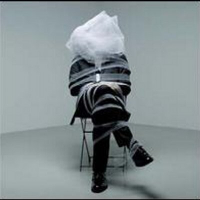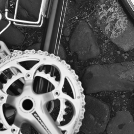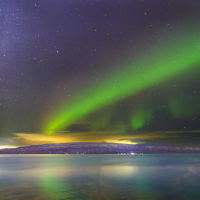Race safety
Comments
-
It's much easier to accommodate all the hospitality required down the mountain though. The Vuelta seems to manage though.kingstongraham said:Because Pidcock's descent wasn't to a finish, there was no reason for anyone to try to ride on or possibly beyond their limits to keep up with him. He stopped for a wee and waited for the break that he'd caught and passed once he was in the valley.
Descents to a finish are a different beast.0 -
Not sure a speed limit in a race is really appropriate.N0bodyOfTheGoat said:As much as downhill skill can make such a difference for the likes of Cav chasing back on the descent after a climb , or Pid breaking away last summer on the descent before Alpe d'Huez, how about...
A safety evaluation of bends for the stages, decide a max speed for hazardous bends and stick a huge sign showing riders live speed (with max speed sign above it) in a good spot before the bends? Break the speed limit, you get a time penalty.
I'm still none the wiser regarding any circumstances that lead to Mader tragically leaving the road, so no idea if speed was a factor.0 -
And GPS is poor at determining speed accurately on the fly, so how would a rider know if his/her speed was accurate before the corner?rick_chasey said:
Not sure a speed limit in a race is really appropriate.N0bodyOfTheGoat said:As much as downhill skill can make such a difference for the likes of Cav chasing back on the descent after a climb , or Pid breaking away last summer on the descent before Alpe d'Huez, how about...
A safety evaluation of bends for the stages, decide a max speed for hazardous bends and stick a huge sign showing riders live speed (with max speed sign above it) in a good spot before the bends? Break the speed limit, you get a time penalty.
I'm still none the wiser regarding any circumstances that lead to Mader tragically leaving the road, so no idea if speed was a factor.
0 -
Maybe they could fit limiters to the bikes, hit 50 mph and it puts the brakes on. Could be interesting to watch.0
-
Drifting at 50 mph?webboo said:Maybe they could fit limiters to the bikes, hit 50 mph and it puts the brakes on. Could be interesting to watch.
Interesting.The above may be fact, or fiction, I may be serious, I may be jesting.
I am not sure. You have no chance.Veronese68 wrote:PB is the most sensible person on here.0 -
I don't think the suggestion was using the rider's GPS, more like the radar-based active speed signs you get that are fixed to lamp post etc and give you speed in red, green, sometimes amber depending on how good or naughty you are.andyp said:
And GPS is poor at determining speed accurately on the fly, so how would a rider know if his/her speed was accurate before the corner?rick_chasey said:
Not sure a speed limit in a race is really appropriate.N0bodyOfTheGoat said:As much as downhill skill can make such a difference for the likes of Cav chasing back on the descent after a climb , or Pid breaking away last summer on the descent before Alpe d'Huez, how about...
A safety evaluation of bends for the stages, decide a max speed for hazardous bends and stick a huge sign showing riders live speed (with max speed sign above it) in a good spot before the bends? Break the speed limit, you get a time penalty.
I'm still none the wiser regarding any circumstances that lead to Mader tragically leaving the road, so no idea if speed was a factor.
Speed might well have nothing to do with the accident. Puncture, locked wheel from stone/twig, brain fart? He was a Swiss rider, on Swiss roads in a Swiss race. He'll have ridden and raced those roads plenty, most likely. IIRC they were up there the day before, or was it going to be the day after?0 -
Can’t help thinking that some of the suggestions being made are a little bit over the top for what was a tragic but fortunately very rare incident. Race organisers should do what is reasonably practicable and consider whether descents are suitable for inclusion but ultimately riders will always determine for themselves where their limits are.3
-
Signage seems the most appropriate and practicalPross said:Can’t help thinking that some of the suggestions being made are a little bit over the top for what was a tragic but fortunately very rare incident. Race organisers should do what is reasonably practicable and consider whether descents are suitable for inclusion but ultimately riders will always determine for themselves where their limits are.
"If I was a 38 year old man, I definitely wouldn't be riding a bright yellow bike with Hello Kitty disc wheels, put it that way. What we're witnessing here is the world's most high profile mid-life crisis" Afx237vi Mon Jul 20, 2009 2:43 pm0 -
I'd leave it as is. Riders have to make their own choices about the degree of risk they take.
I don't mind the idea of signage but there are questions about what the criteria is for signing dangerous corners - if it's not consistent it could potentially cause issues where riders go in faster because there is no warning sign - but have a low bar for putting a warning up and they lose their purpose.[Castle Donington Ladies FC - going up in '22]0 -
Vaughters has apparently been talking about ski style netting to protect certain hazards, which I can see some virtue in. Not a guaranteed thing, of course, but I suspect the gully would have received netting as any rider coming off there was always going to end up with what looked like a sheer drop.
It's also only an extension of the padding we've seen around road furniture etc, so we know organisers are already in the habit of doing that sort of risk assessment and that it's not disproportionate to do so.0 -
The suggestion was that riders would be docked time if they were going above a set limit so they need to know how fast they are going before the speed trap, no? Which would have to be GPS based.me-109 said:
I don't think the suggestion was using the rider's GPS, more like the radar-based active speed signs you get that are fixed to lamp post etc and give you speed in red, green, sometimes amber depending on how good or naughty you are.andyp said:
And GPS is poor at determining speed accurately on the fly, so how would a rider know if his/her speed was accurate before the corner?rick_chasey said:
Not sure a speed limit in a race is really appropriate.N0bodyOfTheGoat said:As much as downhill skill can make such a difference for the likes of Cav chasing back on the descent after a climb , or Pid breaking away last summer on the descent before Alpe d'Huez, how about...
A safety evaluation of bends for the stages, decide a max speed for hazardous bends and stick a huge sign showing riders live speed (with max speed sign above it) in a good spot before the bends? Break the speed limit, you get a time penalty.
I'm still none the wiser regarding any circumstances that lead to Mader tragically leaving the road, so no idea if speed was a factor.
Anyway, it's a ridiculous idea and I'm not sure why I'm still discussing it.
0 -
Yes it's a race - we can't neutralise descents, well we can but it's basically saying descending is too dangerous to be part of racing. If we want to slow riders why are we allowing ever faster bikes - it'd make zero impact on the spectacle to insist on shallow wheels, external cables, jerseys with functioning pockets etc and that would knock a few mph off descending speeds straight away.andyp said:
The suggestion was that riders would be docked time if they were going above a set limit so they need to know how fast they are going before the speed trap, no? Which would have to be GPS based.me-109 said:
I don't think the suggestion was using the rider's GPS, more like the radar-based active speed signs you get that are fixed to lamp post etc and give you speed in red, green, sometimes amber depending on how good or naughty you are.andyp said:
And GPS is poor at determining speed accurately on the fly, so how would a rider know if his/her speed was accurate before the corner?rick_chasey said:
Not sure a speed limit in a race is really appropriate.N0bodyOfTheGoat said:As much as downhill skill can make such a difference for the likes of Cav chasing back on the descent after a climb , or Pid breaking away last summer on the descent before Alpe d'Huez, how about...
A safety evaluation of bends for the stages, decide a max speed for hazardous bends and stick a huge sign showing riders live speed (with max speed sign above it) in a good spot before the bends? Break the speed limit, you get a time penalty.
I'm still none the wiser regarding any circumstances that lead to Mader tragically leaving the road, so no idea if speed was a factor.
Anyway, it's a ridiculous idea and I'm not sure why I'm still discussing it.
It's worth reiterating that Mader had no real reason to feel under particular pressure to take excessive risks just because the descent was close to the finish. He wasn't going for stage or GC honours , losing another 10 seconds or so was irrelevant.[Castle Donington Ladies FC - going up in '22]1 -
You'd have to do every bend on every descent as a minimum because if you missed one and a rider went off on that one you'd have even more grief. I assume big events have pretty robust risk assessments in place (although with some of the races in Italy and Spain that I've seen the assessors seem to have been taking something strong).Lanterne_Rogue said:Vaughters has apparently been talking about ski style netting to protect certain hazards, which I can see some virtue in. Not a guaranteed thing, of course, but I suspect the gully would have received netting as any rider coming off there was always going to end up with what looked like a sheer drop.
It's also only an extension of the padding we've seen around road furniture etc, so we know organisers are already in the habit of doing that sort of risk assessment and that it's not disproportionate to do so.0 -
Personally I think it's not narrow roads or tight bends that are the fatal ones .. it's speed .. all the descent deaths have been on faster straighter sections in to sometime quite manageable bends . Crashing on a twisting switch back is rarely a big injury off .,.. it's straighter sections that are the danger ....in a way it wasn't the corner that killed mader it was the straight before the corner
But as I said earlier I want a deep study conducted ..."If I was a 38 year old man, I definitely wouldn't be riding a bright yellow bike with Hello Kitty disc wheels, put it that way. What we're witnessing here is the world's most high profile mid-life crisis" Afx237vi Mon Jul 20, 2009 2:43 pm0 -
This idea (break the speed limit, and you are penalised/disqualified) was introduced for some Gran Fondo in Austria 5-10 years ago, if a max speed was exceeded over ~5 km major steep descents. I think maybe 5% of participants were then disqualified.N0bodyOfTheGoat said:how about...
A safety evaluation of bends for the stages, decide a max speed for hazardous bends and stick a huge sign showing riders live speed (with max speed sign above it) in a good spot before the bends? Break the speed limit, you get a time penalty.
I'm not sure how valuable it was; I think the main concern wasn't danger at speed but possible oncoming traffic - the roads weren't totally closed.0 -
My main point initially was that there is almost consistent criteria throughout Europe and the local Swiss authoirities hadn't followed it.DeVlaeminck said:
I don't mind the idea of signage but there are questions about what the criteria is for signing dangerous corners - if it's not consistent it could potentially cause issues where riders go in faster because there is no warning sign - but have a low bar for putting a warning up and they lose their purpose.
Proper signage in accordance with criteria obviously doesn't prevent someone going off the road, but at least it gives them enough indication of possible danger and maybe coulds prevent that happening.0 -
I think you are probably right in respect of the two crashes, Sheffield and Mäder – speed, and taking the bend at the 'unbest' side of the road.mididoctors said:Personally I think it's not narrow roads or tight bends that are the fatal ones .. it's speed .. all the descent deaths have been on faster straighter sections in to sometime quite manageable bends . Crashing on a twisting switch back is rarely a big injury off .,.. it's straighter sections that are the danger ....in a way it wasn't the corner that killed mader it was the straight before the corner
But as I said earlier I want a deep study conducted ...
It will be interesting to know Sheffield's account. Mäder, lovely person as he was, also wasn't known as a great descender.
0 -
I don’t even think it’s the road so much as what is alongside it.
If you look at the crash deaths, almost all of them are riding *into* something. Same with Maeder, he hit that big concrete pipe thing.
Motos, cars, concrete bollards etc.
I think we all accept you will have crashes regardless of the road; hell most crashes happen on straight roads.
So it’s being more judicious around road furniture and route selection not so much because of the challenge of the road but the stuff around it.
So maybe it’s changing the focus of the marshals to also whistle and highlight instances with dangerous road furniture which is *in a likely bike or crash path*0 -
Just read a young rider, Jacopo Venzo, died in Austria's Junioren Rundfahrt a few days ago. Not much in the way of details, but happened on a descent.
https://www.bbc.co.uk/sport/cycling/66280173================
2020 Voodoo Marasa
2017 Cube Attain GTC Pro Disc 2016
2016 Voodoo Wazoo0 -
I think this tour really highlighted how there are too many motos for the level of crowd.
I think in general we need to cut the amount of motos significantly. That means, unfortunately, less coverage, but I think that is a trade of for safer and fairer racing.
Too often motos are influencing races, whether holding riders up or providing drafting opportunities, and far too often they are involved in accidents.
There are a whole host of motos that I think would have only a marginal cost if they were removed. #1, get rid of the shimano bike motos. More than half the peloton can't ride them and riders will wait for their team.
#2, fewer race photographers. Why not have one or two for the official photos?
#3, fewer coverage motos. this is probably the hardest for me to admit as I think the colour the Belgians and the radio moto riders give is really valuable and unique, but flick onto the Eurosport coverage and it's dire and does not add any value.1 -
Motos should just be the TV cameras, race officials / drinks bikes etc. and security. Maybe a few photographers to capture incidents and publish via agencies but most of them should be able to move around the route outside of the race convoy and choose a location for their pictures, proper artistic photography like I believe the Grubers do. With full-time TV coverage we don't really need photographers there to tell the story as we did in the past. The commentators on bikes are hot and miss, Blythe and Gilbert managed to get some decent chats with the Directors and a few riders coming back through the cars but a lot of the time they don't really add anything.0
-
Just maybe the spectators carry some blame for the impact of the motos by closing the roads too much from both sides. I'd agree they don't really need the on-bike commentators (no idea how many there might be across the different languages and media outlets), and think they should reduce the number of permitted photographers.
I do wonder the impact on riders lungs and general health when riding in close proximity to all these vehicles, particularly on long climbs in relatively closed atmospheres when working hard and breathing heavily. I hate getting passed by stinky traffic so being stuck with it must be terrible.0 -
Agree on the whole motos thing - is unbelievable when the helicopter camera pans out and shows how many are around the riders (would give Carlton less to talk about)rick_chasey said:I think this tour really highlighted how there are too many motos for the level of crowd.
I think in general we need to cut the amount of motos significantly. That means, unfortunately, less coverage, but I think that is a trade of for safer and fairer racing.
Too often motos are influencing races, whether holding riders up or providing drafting opportunities, and far too often they are involved in accidents.
There are a whole host of motos that I think would have only a marginal cost if they were removed. #1, get rid of the shimano bike motos. More than half the peloton can't ride them and riders will wait for their team.
#2, fewer race photographers. Why not have one or two for the official photos?
#3, fewer coverage motos. this is probably the hardest for me to admit as I think the colour the Belgians and the radio moto riders give is really valuable and unique, but flick onto the Eurosport coverage and it's dire and does not add any value.
Not sure about the neutral service point - agree that the break/peloton don't need them (break could utilise the spare wheel bikes if the car's not in the gap mind), but I imagine the dropped riders rely on the neutral service a lot more, and I guess we don't see that (so we can certainly bin some of them)
0 -
Having said all this, our memories erase the motos.
I was watching Lance up Sestriere the other day. https://www.youtube.com/watch?v=B6hM9ejMiAk
https://www.youtube.com/watch?v=B6hM9ejMiAk
Practically gets towed up the entire way by the motos.0 -
The photo pool motos are legion ...thin them out"If I was a 38 year old man, I definitely wouldn't be riding a bright yellow bike with Hello Kitty disc wheels, put it that way. What we're witnessing here is the world's most high profile mid-life crisis" Afx237vi Mon Jul 20, 2009 2:43 pm0
-
I think there's about 10 ahead of him!rick_chasey said:Having said all this, our memories erase the motos.
I was watching Lance up Sestriere the other day. https://www.youtube.com/watch?v=B6hM9ejMiAk
https://www.youtube.com/watch?v=B6hM9ejMiAk
Practically gets towed up the entire way by the motos.0 -
MSR used to be like this on the poggio ....
There is quite good arguments of two outrider bike clear a path through crowds but the effect only works if the bikes stay quite close as of they have a healthy distance the crowds just fill back in behind the bikes ... The rope on pinots corner worked well"If I was a 38 year old man, I definitely wouldn't be riding a bright yellow bike with Hello Kitty disc wheels, put it that way. What we're witnessing here is the world's most high profile mid-life crisis" Afx237vi Mon Jul 20, 2009 2:43 pm1 -
- That music's annoying as feck
- It actually took me a while to notice the absence of helmets
- Not everybody had their stems slammed, LA especially, so where did that notion come from?
- Doesn't everybody look more stretched out than positions seem to be these days?
0 - That music's annoying as feck
-
It'd be interesting to know just how many motos there are.
Photographers following the race within the convoy does seem a bit of an anachronism - maybe the impact of stills photography is something you don't miss until it's gone but I honestly can't think it adds much to the coverage. Is it not possible to take an image from a video camera feed anyway?
I quite like the Brad (Adam, Philippe. Jens) on a bike thing but I could live without it. That said they aren't the guys towing time break along or the bunch back up to the break. Ok they must be riding past the bunch to know be up behind the break but they should be one of the least intrusive vehicles.
There are 2 problems really. The impact on safety of having vehicles around cyclists and then the impact on the result if a rider is sat behind a motorbike. As far as the second issue goes I guess a lot of it is down to how close do they have to be to get the footage. I don't want the race decided by the motos but I do want to see great coverage on my TV.[Castle Donington Ladies FC - going up in '22]0







